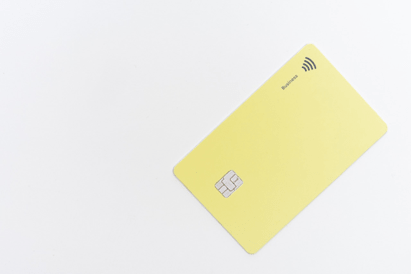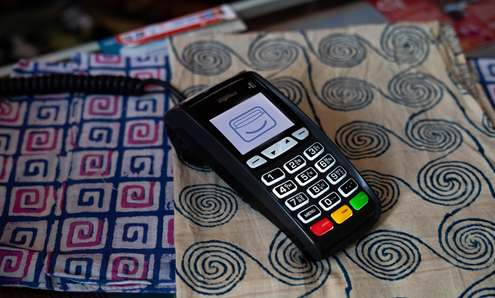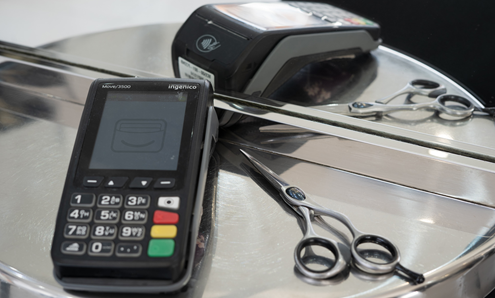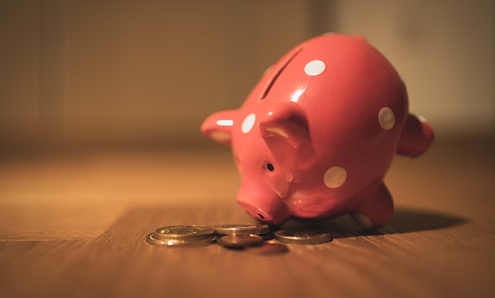Contactless payments are well and truly on the up. It’s no surprise – they’re literally a one-tap wonder!
We’ve even got the stats to back it up. Our data shows that contactless transactions increased by 25% from 2021/22 vs 2022/23*. We also uncovered that 9 out of 10 transactions on our card machines and point of sale (POS) systems were contactless payments.
So, the message we’re trying to get across is that contactless is a big deal. If you’re not currently accepting it, you could be missing out on potential sales.
The good news is we’re one step ahead of the game. All takepayments card machines come with contactless set up. You’ll be ready to start benefiting from Chip and PIN and contactless payments right away.
If you’re setting up your store for the first time or need a refresher on how contactless payments work, we’ve got you covered. In our guide, we’ll walk you through everything you need to know: from their benefits to how you can start accepting contactless payments.
What is a contactless payment?
Contactless payments are a method of payment that allows customers to make transactions without physically swiping a card or inserting it into a payment terminal.
Contactless technology uses Near-field Communication (NFC) or radio-frequency identification (RFID) technology to transfer payment information between a card and the payment terminal. This involves tapping or waving a contactless-enabled card near a terminal to complete the transaction – taking away the need to insert a card, enter a PIN, or sign a receipt.
Contactless payments first started back in 2007 when Barclaycard introduced it as a feature with the OnePulse card, which shoppers could use on purchases up to £10 across limited retailers and the Transport for London network. Since then, the contactless limit has increased to £30, then to £45, and now £100 — and the wireless communication technology has been rolled out to more and more devices.
Today, customers can tap and go using smartphones, smartwatches, and other wearables. Contactless is also widely accepted across many businesses and transport systems.
What is a contactless card?
To make a contactless payment, a contactless-enabled card is needed. Also known as a tap-and-go card, they are essentially bank cards that contain a built-in contactless chip or antenna that emits radio waves to connect to a contactless reader. This RFID technology enables secure and fast transactions without needing to be physically entered into a card terminal.



Contactless bank cards are usually issued by card providers and they will have the contactless symbol on them to show that they are compatible with readers that use NFC technology.
Is there a contactless card cap?
As of October 2021, the contactless card limit has been upped to £100 per transaction. This means that customers can tap their card for purchases up to the total cost of £100; any higher and they will need to use Chip and PIN to complete the payment.
The increase was fuelled by the rising popularity of contactless payments and to encourage consumers to spend and boost retail and economic growth following the covid-19 pandemic.
For most retailers, you will need to update your payment terminals to accept the new contactless card cap. If you’re unsure how to do this, take a look at our guide to increasing the contactless limit on a card machine here.
It’s worth noting that payments using virtual cards via e-wallets, like Apple Pay, don’t have a contactless card limit, but merchants can set their own cap on the maximum amount for e-wallet transactions.
Types of contactless payments
As mentioned before, contactless isn’t just limited to plastic cards anymore. Learn more about the other ways customers can tap to pay:
1. Contactless cards
Contactless was first introduced using contactless debit or credit cards, and they’re still popular today. While they may look like regular cards with a traditional Europay, Mastercard and Visa (EMV) chip, they’re also embedded with an NFC chip that sends a customer’s card details to the merchant’s terminal wirelessly.
Having both of these features means they can be used for both Chip and PIN and contactless payments.
2. Mobile wallets
Mobile wallets, or e-wallets, are digital applications that allow users to securely store their payment card information on their smartphones or other mobile devices.
Essentially, they hold digital versions of a user’s contactless card and turn their smartphone into a contactless payment device. This means shoppers can hold their phone near a contactless-enabled terminal to make a purchase instead of using their contactless card.
Mobile wallets also use NFC technology to transmit payment information securely.
Popular mobile wallets include Apple Pay, Google Pay, and Samsung Pay.
3. Wearable devices
Contactless payments have expanded beyond smartphones and are now possible with wearable devices like smartwatches, fitness trackers, and even jewellery.
Applying RFID to these items and linking them to a customer’s e-wallet makes them contactless compatible as they are equipped with the necessary technology to send card information to merchant terminals.
Just like paying by contactless with a smartphone, wearable devices can simply be tapped near a payment terminal to complete the transaction without needing to insert a physical card.
How are contactless payments secure?
Despite lacking a unique PIN code to complete a transaction, contactless payments are very secure. Here’s why:
Short-range communication – Contactless cards only work in close proximity, usually a few centimetres, to a payment terminal for communication to occur. This short-range communication reduces the risk of unauthorised interception or data theft.
Reduced physical contact – Without needing to be inserted into a card reader, the chances of the card being copied by a compromised device are drastically reduced.
Tokenisation – Contactless cards use a security technique called tokenisation, where instead of transmitting the actual card number during a contactless transaction, a unique randomly generated token is used. Even if the token were intercepted, it would be useless to fraudsters as it cannot be used outside the specific transaction context.
Transaction limits – Contactless cards typically have transaction limits set by the card issuer or payment network. These limits restrict the maximum value of a contactless payment, making them suitable for small-value transactions and minimising the potential risk if a card is lost or stolen.
Two-factor authentication – In some cases, contactless card transactions may require additional authentication beyond the tap-and-go process. Two-factor authentication adds an extra layer of security by requiring the cardholder to provide a second form of verification, such as entering a PIN, providing a signature, or using biometric authentication.
Zero-liability policies – Many banks and card providers offer zero-liability policies for contactless card transactions, protecting cardholders from financial liability in the event of fraudulent transactions.
Encryption – Contactless transactions are encrypted to protect the data exchanged between the card and the payment terminal. This encryption ensures that the payment information remains secure and cannot be easily intercepted or tampered with during transmission.
How do contactless payments work?
The exact step-by-step process might vary slightly depending on the bank that issued the contactless card, but here’s an overview of how contactless payments typically work:
- When a customer wants to make a purchase, they present their contactless card or enabled device close to the contactless payment terminal at the POS terminal.
- Once in range, the RFID chip in the card or NFC technology in the device wirelessly transmits the customer’s card details to the card reader. The contactless card's actual card details are tokenised during the communication process.
- The payment terminal sends the tokenized transaction details to the card issuer or payment network for authorisation. Like with a Chip and PIN payment, the merchant will request the funds from the cardholder’s bank.
- The bank or issuer will either approve or deny the request after checking that there’s enough money in the customer’s bank account and whether the card has been flagged as stolen. An authorisation response is sent to the payment terminal, indicating a successful or declined transaction.
- After approval, the transaction amount is debited from the cardholder's account or charged to their card.
What are the benefits of contactless payments?
Accepting contactless payments benefits both you and your customers and let’s be honest, what’s good for your customers is good for you, so it’s a win-win-win.
1. It’s easy to use
Gone are the days when customers had to enter their four-digit PIN; all they have to do now is wave their card within the proximity of your machine and they’re done.
We know Chip and PIN was incredibly easy anyway, but contactless payments make transactions that bit more convenient.
2. It saves time
Every second helps, right? Contactless payments take around 12.5 seconds, compared to 26.7 seconds for standard card payments and 33.7 seconds for cash. So, if you’ve got a long queue growing, it could help your lines go down quicker.
Thinking big, the benefits of this one could be huge. For starters, your customers will be happy because they’ll spend less time waiting around. As well as that, your employees could spend less time on the till and more time helping customers on the shop floor. This could help boost your business’s customer service, and even lead to more sales.
3. It’s where things are heading
Keeping up with modern advancements is part and parcel of running a business and staying competitive, and contactless payments are the direction it’s going.
By keeping up with the times, you’ll be giving your customers what they want in more ways than one, which will only add to their satisfaction and loyalty.
4. It could win more sales
Let’s say someone’s come into your shop only to realise they’ve left their card and cash at home… but they do have their mobile phone. If their device facilitates mobile contactless and you’ve got a compatible machine, they could go ahead and still buy something anyway.
If contactless isn’t something you’ve caught onto, they’d have to walk away empty-handed.
How long do contactless payments take to clear?
The time it takes for a contactless transaction to settle is very similar to other card payment methods. For merchants, you can expect contactless payments to fully complete in around three days after the initial transaction date.
This is just an average estimate, though; exact time frames vary slightly between payment providers.
How can businesses get set up to accept contactless card payments?
Contactless transactions might seem like all pros and no cons, and, well, we might be biassed. If you’re a merchant looking to start accepting contactless card payments, the first step is to get set up with a contactless-enabled payment terminal.
Luckily for you, all our card machines come with contactless already set up. Just pick the one that suits your needs: countertop, portable, or mobile reader. We’ll do the rest.
Or, if you need help deciding which terminal is right for you, want to know more about how we work, or you’re ready to book your consultation, get in touch with our payment experts at 0808 274 2017.
*Our transactions data reviewed the total number of contactless and Chip and PIN transactions made from our card machines and point of sale systems from March 2021-February 2022 to February 2022-March 2023.





